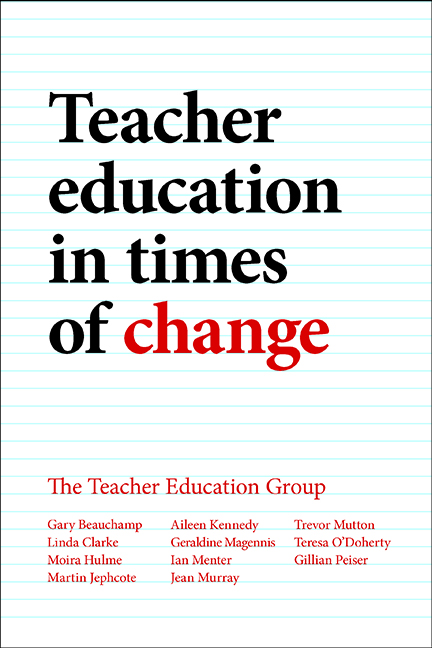Book contents
eight - Teacher education in the Republic of Ireland: a challenging and changing landscape
Published online by Cambridge University Press: 23 August 2022
Summary
Introduction
Teacher education in the Republic of Ireland is currently experiencing ‘aggressive, ambitious programme and structural reform’ (Smith, 2012, p 74). Initial teacher education (ITE) programmes, which are predominantly provided by universities/colleges, are the subject of profound reform in relation to their content, design, duration, process and quality (Coolahan, 2013); in addition, the number of state-funded providers is being rationalised and new structural identities/clusters are being formed. Within a system where the structures for teacher education have deep historical roots, this movement towards the reconceptualisation of teacher education across the continuum has been characterised by a period of incremental development and continuity, followed now by rapid reform and revision.
This chapter examines the last period of reform of Irish teacher education from 1965 to 1975, and then traces the development of teacher education policy from 1991 to 2006, which created both the springboard and capacity for the current phase of change. In a period of economic crisis and retrenchment, where sweeping changes are being made to the process of teacher education and uncertainty abounds as to the retention of colleges/institutions that have persisted and evolved over many decades, Irish teacher education is experiencing unprecedented ‘turbulence’. Within this process there are both opportunities and challenges for teacher education.
1965–75 – the last period of reform in teacher education
Following independence in 1922, the newly formed state inherited and largely accepted the established structures in all areas of activity; Irish education experienced a high level of continuity with the past and as a consequence the structure and provision of primary teacher education between 1924 and 1974 was much as it had been since 1884, when state funding for denominational teacher education was sanctioned and teacher training programmes were extended to two years. During the first four decades following independence while the state financed teacher education, regulated the curriculum and set the examinations, the churches provided teacher education in single-sex residential institutions (four Roman Catholic colleges and one Church of Ireland co-educational college). Established in 1912, teacher education provision for secondary teachers, the Higher Diploma in Education, was a one-year, part-time postgraduate programme, provided by few staff within poorly resourced education departments. Reflecting the low status of education within the universities, the chairs of education remained vacant for varying periods and the infrastructure of university teacher education provision was underdeveloped (Coolahan, 2004a).
- Type
- Chapter
- Information
- Teacher Education in Times of ChangeResponding to challenges across the UK and Ireland, pp. 125 - 140Publisher: Bristol University PressPrint publication year: 2015

